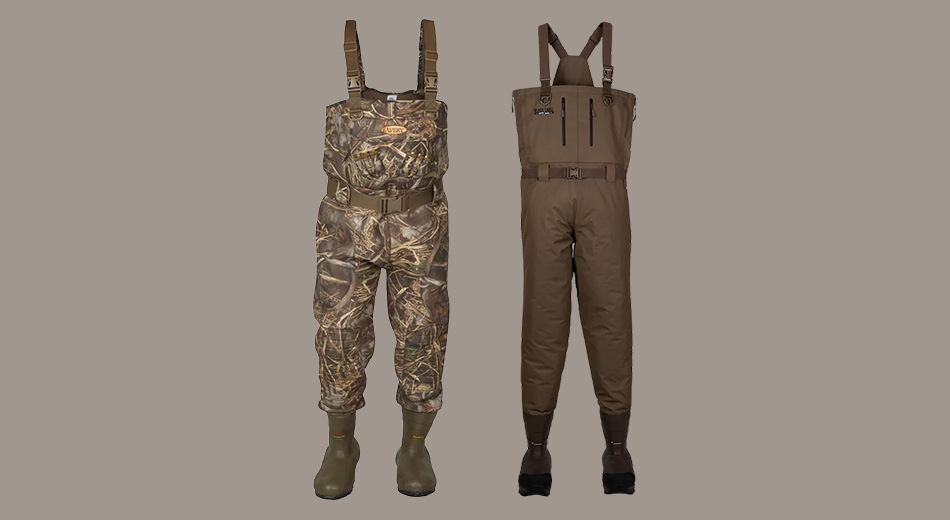
Get Wader Wise
The pros/cons of neoprene and breathable materials can help you find the right waders for you
BY KYLE WINTERSTEEN
Waders aren’t necessarily required to hunt ducks and geese, but for overwater setups, they come pretty close. Options include hip boots and waders that cinch at the waist, but chest waders—which utilize shoulder straps, similar to overalls—are by far the most popular for the depth of wading they allow.
However, your biggest decision will likely be whether to invest in old school neoprene, which is the same material used in wetsuits, or breathable materials—a catchall term for waders made with a waterproof membrane over modern, breathable fabrics. Both carry distinct advantages. Here are some primary considerations:
NEOPRENE CHEST WADERS
Pros
Excellent Warmth and Insulation
Shield out the elements while trapping body heat; fewer layers required, arguably more comfortable in extreme cold.
Highly Durable
Much more resistant to puncture by ice, thorns, or debris.
Cost-Effective
Generally lower priced and can be longer lasting.
Cons
Heavy and Bulky
Thickness adds weight, which can increase hunter fatigue while reducing range of motion.
Poor Breathability
If you sweat inside these, you’re a walking wetland until they come off.
Can’t Take the Heat
You could become dangerously overheated or dehydrated while wearing neoprene during hot, early season hunts.
BREATHABLE CHEST WADERS
Pros
Light and Flexible
Require less effort and offer a full range of motion when hiking to a spot or climbing inside a blind.
Breathable and Comfortable
By far the most comfortable—almost like wearing sweatpants; allow moisture to escape while keeping it out.
Versatile All Season
Even insulated breathables (non-insulated also available) offer better all-season wear. They whisk away sweat when it’s hot.
Cons
Higher Price
The materials and construction of breathables aren’t cheap. Premium models, especially, are a significant investment.
Colder Without Layering
Layer up or you will get cold in most breathables on icy mornings.
Vulnerable to Damage
Thorns, submerged stumps, ice, the corner of a boat or blind—snagging on these probably wouldn’t affect neoprene but they can shred a lot of breathables.
Article originally published in Delta Waterfowl's winter 2025 magazine.
Join Delta Waterfowl to receive our member-exclusive magazine and eNewsletter—packed with the latest in duck research, expert tips on duck dogs, hunting insights, conservation updates, and more.
Your membership helps you stay informed while supporting the future of waterfowling. Join now: Become A Member.
